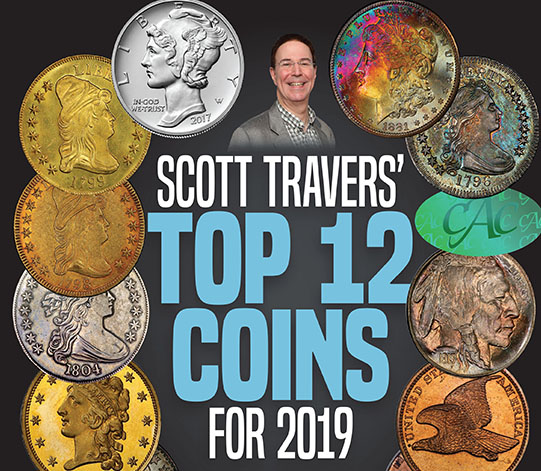
By Scott Travers
2019 will probably not be a year of surprises, good or bad, for the rare coin and precious metals market. It will likely be remembered as a year of the expected and a time of continuity and reasonable trading ranges.
Without a Black Swan event, an extremely difficult to predict monumental occurrence, and I don’t expect one, gold will not surge in value and, by extension, rare coin values won’t reach for the moon. Silver, an industrial metal and commodity, will not see its most shining year either.
Stable Structure
The good news is that stability will reign supreme. I wouldn’t be a big buyer of gold and silver bullion as an investment in 2019; instead, I would carefully and systematically acquire gold and silver coins for your collection.
Platinum and palladium, however, are a different story. These metals may well continue to outperform. So with your expectations set on safety and continuity, and having the luxury of a buyer’s market, here are my top 12 coins for 2019.
#01 PALLADIUM 1-OUNCE WINGED MERCURY AMERICAN EAGLE
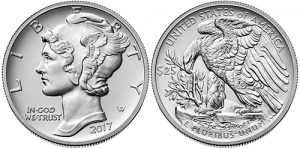 In 2017, the U.S. Mint introduced its first palladium coin, the 1-ounce American Eagle bearing Adolph A. Weinman’s Winged Mercury dime obverse. It sold out its 15,000 mintage in a few minutes. The 2018 palladium American Eagle is proving to be just as popular.
In 2017, the U.S. Mint introduced its first palladium coin, the 1-ounce American Eagle bearing Adolph A. Weinman’s Winged Mercury dime obverse. It sold out its 15,000 mintage in a few minutes. The 2018 palladium American Eagle is proving to be just as popular.
The U.S. Mint is jumping on the platinum-group metal (PGM) bandwagon. Palladium, along with rhodium, platinum, iridium, ruthenium, and osmium, make up the PGMs. This sector will see much demand as more nations are tightening emissions controls, and PGMs are required in catalytic converters. China’s new national policy for emissions standards will give a significant boost to platinum.
Watch the premiums that you pay over the melt value. In December 2018, with palladium at about $1,200 per ounce, both business strike and proof examples of the palladium 1-ounce Winged Mercury American Eagle were trading for close to $3,000 apiece.
#02 AND 03 $2½, $5, AND $10 GOLD PIECES FROM THE LATE 1700S AND EARLY 1800S IN (2) UNCIRCULATED AND (3) ALMOST
UNCIRCULATED CONDITIONS
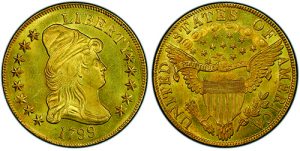 The Mint Act of 1792 provided for the issuance of three gold coins: an eagle, or $10 gold piece; a half eagle ($5); and a quarter eagle ($2½). The eagle and half eagle made their first appearance in 1795, with the quarter eagle joining them in 1796.
The Mint Act of 1792 provided for the issuance of three gold coins: an eagle, or $10 gold piece; a half eagle ($5); and a quarter eagle ($2½). The eagle and half eagle made their first appearance in 1795, with the quarter eagle joining them in 1796.
The Founding Fathers felt deeply that issuing gold coins was an important means of lending credibility and prestige to U.S. coinage when the United States first took its place on the world stage, and the practice continued for nearly a century and a half. Not until the Great Depression ravaged the nation’s economy did Uncle Sam retreat from this commitment.
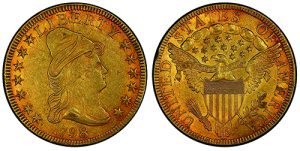 Early U.S. gold coins are wonderful buys in any collectible grade and are extremely attractive even when lightly circulated. However, they are in a class by themselves in mint or uncirculated conditions. Like their circulated counterparts, Mint State early gold coins are truly rare, have a solid collector base, hold great appeal for investors, and enjoy an outstanding track record in the marketplace. What sets them apart from the rest is their dazzling appearance. These miniature works of art would look right at home in a gallery or museum.
Early U.S. gold coins are wonderful buys in any collectible grade and are extremely attractive even when lightly circulated. However, they are in a class by themselves in mint or uncirculated conditions. Like their circulated counterparts, Mint State early gold coins are truly rare, have a solid collector base, hold great appeal for investors, and enjoy an outstanding track record in the marketplace. What sets them apart from the rest is their dazzling appearance. These miniature works of art would look right at home in a gallery or museum.
In 1979 and 1980, when gold bullion soared to an all-time record high of more than $875 an ounce internationally, the coin market experienced a boom. The impact was enormous across the board. When gold began surging again a quarter-century later, early gold coins got a much bigger boost than anything else and retained their luster even in the face of faltering gold prices.
The universal beauty and easily appreciated rarity of these coins appeal to the most well-heeled buyers, who pursue collecting these exceptionally rare and beautiful coins.
#04 ENTRY LEVEL: 1% COINS
Serious collectors were focused on multi-million-dollar classic American rarities in 2018, a trend I correctly forecast would continue in the February 2018 issue of COINage. The top 1% of income-earners in America who are collectors appreciate these coins and are causing them to rise in value as a result of high demand.
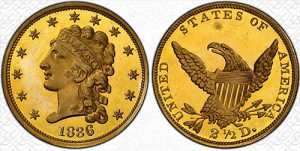 A new area of interest has emerged as an outgrowth of the popularity of 1% coins: Entry level 1% coins. These coins are priced in the $400,000-$600,000 price range and represent coins such as early Gem Proof gold that have tiny mintages, with only a handful of coins extant.
A new area of interest has emerged as an outgrowth of the popularity of 1% coins: Entry level 1% coins. These coins are priced in the $400,000-$600,000 price range and represent coins such as early Gem Proof gold that have tiny mintages, with only a handful of coins extant.
Coins in this category represent “entry level” for the 1%, the wealthiest Americans just starting to collect ultra-rare U.S. coins. John Dannreuther’s new proof gold encyclopedia has done much to educate collectors about this nuanced marketplace.
05 THE 1804: SILVER DOLLAR
The 1804 silver dollar is one of the most famous U.S. coins and one of the most valuable. Fifteen examples are known, and a number of other coins exist in smaller quantities.
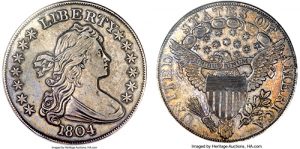 Part of the lure of the 1804 dollar stems from its long status as a coin of mystery. Examples of the coin didn’t start turning up until the mid-1800s, even though U.S. Mint records stated that 19,570 silver dollars had been struck in 1804.
Part of the lure of the 1804 dollar stems from its long status as a coin of mystery. Examples of the coin didn’t start turning up until the mid-1800s, even though U.S. Mint records stated that 19,570 silver dollars had been struck in 1804.
This theory persisted for more than a century until, at last, in 1962, Eric P. Newman and Kenneth E. Bressett came up with what now is accepted as the real explanation. The key to their theory was the emergence of the so-called King of Siam Proof Set, which had been in the possession of a British family, unbeknownst to the numismatic world, for generations. The set contained examples of U.S. proof coins from the early 19th century, and though most were dated 1834, two of them – including the silver dollar – bore the date 1804.
The researchers discovered that special U.S. proof sets were made in the early 1830s as gifts for Asian rulers. The sets were to be presented – although just two of them were – when a U.S. trade envoy visited those rulers’ far-off lands in hopes of forging economic ties. From their dates, it is clear that the coins were meant to be current-year issues. But silver dollars and eagles ($10 gold pieces), though still considered part of the nation’s coinage lineup, hadn’t been issued since 1804. The U.S. Mint’s solution, the researchers suggested, was to strike new examples of those coins but date them 1804.
That explained why the Siam set, made in the 1830s, contained a silver dollar dated 1804. But what about those 19,570 dollars produced by the Mint in 1804?
Again, the researchers had a logical answer: Since it was the Mint’s practice at that time to use coinage dies until they wore out, even after the end of a calendar year, the coins almost certainly were struck from dies left over from 1803. So the 1804 dollars made for the special sets three decades later were the only ones actually struck with that date.
An 1804 dollar (Original – Class I, BB-304-Dexter) graded Proof-65 by the Professional Coin Grading Service (PCGS) sold in 2017 by Stack’s Bowers Galleries as part of the D. Brent Pogue Collection for $3.29 million. And a Proof-68 Pogue example had an offer of $10 million rejected.
06 MINT STATE 1809-1837 CAPPED BUST DIMES
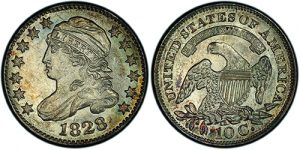 The very first dimes had what is known as a “Draped Bust” design, showing a bust of Miss Liberty with drapery over her shoulder. In 1809, this portrait was modified and a turban-type cap was placed on Liberty’s head, creating what is known as the Capped Bust dime. This design continued until 1837, when the coin’s dimensions were slenderized, giving it the diameter still in use today.
The very first dimes had what is known as a “Draped Bust” design, showing a bust of Miss Liberty with drapery over her shoulder. In 1809, this portrait was modified and a turban-type cap was placed on Liberty’s head, creating what is known as the Capped Bust dime. This design continued until 1837, when the coin’s dimensions were slenderized, giving it the diameter still in use today.
Capped Bust dimes had extremely low mintages, judged by current standards. In only four years did their output exceed 1 million, and then not by much. On the other hand, there were nine years in which the total came to less than 500,000. Furthermore, few were saved, since coin collectors were similarly sparse in those early years. There is a strong collector base for Capped Bust dimes and their varieties.
07 THE 1955 DOUBLED-DIE LINCOLN CENT GRADED MINT STATE-63 RED
One of the biggest coin mistakes ever to escape from Uncle Sam’s clutches was a 1955 Lincoln cent with dramatically doubled images on the date and the inscriptions on the obverse. This error came about because of misalignment in a process known as “hubbing” of the dies.
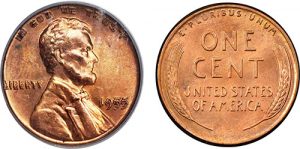 A coin is created by striking a planchet, or blank piece of metal, with two dies – one bearing the design for the obverse, the other having the elements for the reverse. On each die, the design appears in mirror image. A die, in turn, is made by striking a piece of tempered steel with a hub, a harder piece of steel on which the design is positive, or just the way it will look on the finished coin. To make the impression stronger, technicians give each master die multiple blows with the hub.
A coin is created by striking a planchet, or blank piece of metal, with two dies – one bearing the design for the obverse, the other having the elements for the reverse. On each die, the design appears in mirror image. A die, in turn, is made by striking a piece of tempered steel with a hub, a harder piece of steel on which the design is positive, or just the way it will look on the finished coin. To make the impression stronger, technicians give each master die multiple blows with the hub.
On rare occasions, the hub and die become misaligned between blows, and when that occurs, the die emerges with doubling of the images. That’s what happened in 1955. Inspectors discovered this problem, but not before small but significant quantities of “doubled-die” cents – perhaps 30,000 – had been mixed with normal coins. Rather than destroy the whole batch, they decided to let the misstrikes go. An MS-63 Red certified by PCGS, if you can find one, should cost you about $7,000.
08 1856 FLYING EAGLE CENT IN PROOF-63
By the 1850s, the large copper cent had worn out its welcome, along with the pockets of many Americans, because it was so heavy and inconvenient to carry around. The U.S. Mint conducted tests to find a suitable substitute and settled at length on a much smaller coin made from an alloy of 88% copper and 12% nickel.
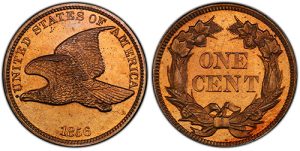 The coin was the same diameter as the current Lincoln cent but thicker and nearly twice as heavy. It carried a portrait showing an eagle in flight and came to be known as the Flying Eagle cent. The Flying Eagle cent wasn’t struck for commerce until 1857. However, the Mint produced small quantities of the coin in 1856 for presentation to members of Congress, Treasury officials, and other dignitaries, partly to show them what it had in mind and partly to win their support.
The coin was the same diameter as the current Lincoln cent but thicker and nearly twice as heavy. It carried a portrait showing an eagle in flight and came to be known as the Flying Eagle cent. The Flying Eagle cent wasn’t struck for commerce until 1857. However, the Mint produced small quantities of the coin in 1856 for presentation to members of Congress, Treasury officials, and other dignitaries, partly to show them what it had in mind and partly to win their support.
Researchers estimate that more than 600 were distributed in this fashion and that hundreds of restrikes were made a few years later, using the same dies, for sale to collectors of the day – a combined total of possibly 1,500, all of them proofs. The 1856 Flying Eagle cent has always been popular with collectors and doubtless always will be. Besides being rare, it’s also the nation’s first small-size cent. Prices are far from cheap – $25,000 in Proof-63 – but this coin will always be worth a pretty penny.
09 1913-S VARIETY 2 BUFFAL NICKEL GRADED MINT STATE-65
The very first examples of this chiseled-looking coin were different from those that followed in a subtle yet significant way: The bison was depicted standing atop raised ground – what collectors refer to as a “mound.” This reinforced the naturalistic appearance of the coin. Unfortunately, though, designer James Earle Fraser had chosen this location for the crucial inscription “FIVE CENTS,” and because this part of the coin was relatively high and exposed, that statement of value soon began wearing off in circulation.
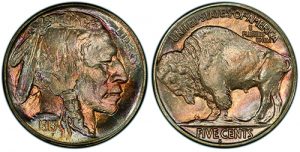 To correct this problem, the Mint did away with the mound, showing the bison instead on a straight line or “plain,” with the words “FIVE CENTS” recessed below it.
To correct this problem, the Mint did away with the mound, showing the bison instead on a straight line or “plain,” with the words “FIVE CENTS” recessed below it.
Buffalo nickels were made in both varieties that year at all three mints then in operation: Philadelphia, Denver, and San Francisco. The scarcest of these was the “plain” variety from San Francisco, with a mintage of barely 1.2 million. The S-mint “mound” variety also is scarce, with a mintage of only about 2.1 million. But this was saved in far greater numbers in mint condition because it was the first to appear; when the second version came out, many saw no reason to set it aside.
The 1913-S Variety 2 nickel is far from cheap; certified as Mint State-65, it will cost you roughly $2,600. It is extremely elusive in higher grades.
10 COINS WITH GRADES VERIFIED BY CAC
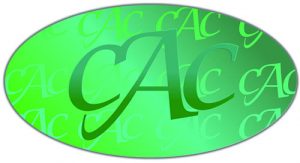 A coin already in an NGC or PCGS plastic holder receives a green holographic sticker if, in the opinion of the Certified Acceptance Corporation (CAC), the coin is solidly graded or high-end for its grade. Coins in holders with CAC green stickers sometimes sell for a considerable premium more than their counterparts without CAC stickers.
A coin already in an NGC or PCGS plastic holder receives a green holographic sticker if, in the opinion of the Certified Acceptance Corporation (CAC), the coin is solidly graded or high-end for its grade. Coins in holders with CAC green stickers sometimes sell for a considerable premium more than their counterparts without CAC stickers.
A tumultuous 2018 for PCGS, which saw key employees leave the company, has caused many collectors to rely more on CAC than in previous years. I expect this trend to intensify.
11 SCARE OR RARE ONE-YEAR TYPE COINS
In recent years, many collectors have abandoned date-and-mint collecting and turned instead to assembling sets of “type coins.” Rather than encompassing every date in a series from every mint, a “type set” contains just one example of any particular coin, or one example of every major type within that series.
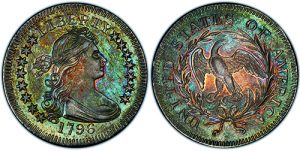 Major types are often one-year issues. Frequently, problems arise when a coin is first produced and the Mint makes adjustments to fix it before the next year’s run. Since demand is high for these one-year type coins and the supply is limited to just that single year, there’s strong upward pressure on their value.
Major types are often one-year issues. Frequently, problems arise when a coin is first produced and the Mint makes adjustments to fix it before the next year’s run. Since demand is high for these one-year type coins and the supply is limited to just that single year, there’s strong upward pressure on their value.
Some are relatively common; the Type 1 Buffalo nickel isn’t a scarce issue, for example, and I do not recommend it as a great investment. Others, however, are quite rare. Those coins I do recommend. These include the 1796 Draped Bust quarter and the 1916 Standing Liberty quarter in virtually all grades.
12 MORGAN SILVER DOLLARS WITH WILD TONING
Over the last quarter-century, silver dollars have been perennial pace-setters in the coin market, with the Morgan dollar reigning as king of the hill. Morgan dollars are the most popular and widely collected of all coins. There are good reasons for this.
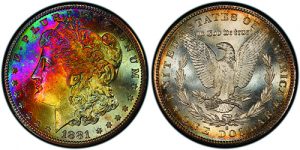 These are large, bulky coins with high precious-metal content – more than three-quarters of an ounce of silver – they’re old, often dating back more than a hundred years, and many are extremely well-preserved, since millions never left bank and government vaults. These qualities give silver dollars exceptional appeal not only to collectors but also to investors purchasing coins for their portfolios.
These are large, bulky coins with high precious-metal content – more than three-quarters of an ounce of silver – they’re old, often dating back more than a hundred years, and many are extremely well-preserved, since millions never left bank and government vaults. These qualities give silver dollars exceptional appeal not only to collectors but also to investors purchasing coins for their portfolios.
Colorfully toned cartwheels certified as MS-66 and available for purchase at $500 with auction comparables at $10,000 or $20,000 are irresistible. This is a niche area, and the number of people capable of picking out the winners is limited. I like the most spectacularly toned.



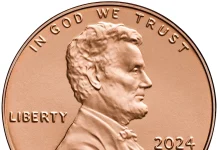











Those are stunning really. I just bought this gold one. I love #5!
1964 uncl. Kennedy halves. Value?